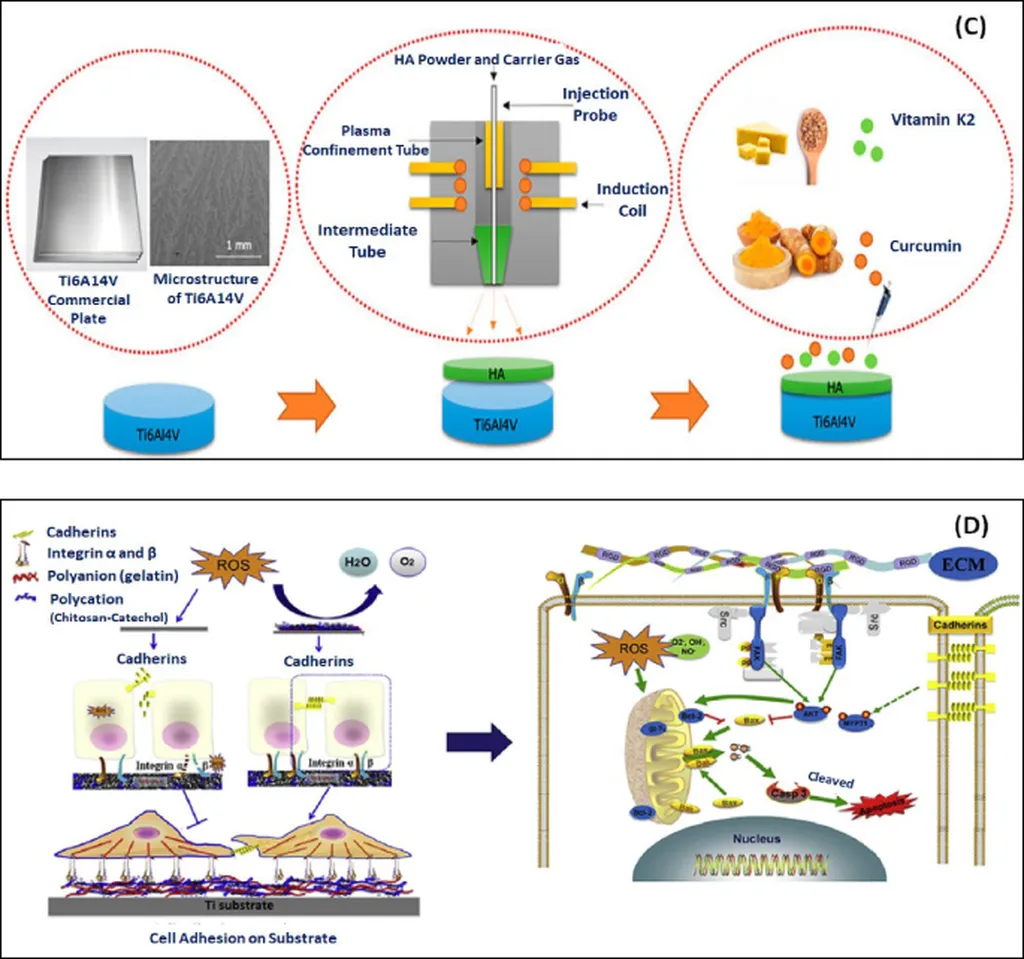In the ever-evolving world of biomaterials, a groundbreaking study published in the journal *Materials Research* (or *Pesquisa em Materiais* in Portuguese) is set to redefine how we understand the interaction between metallic implants and the human body. Led by Renato Trevilato, this research delves into the intricate relationship between surface properties of titanium alloys and cell viability, offering promising insights for the energy sector and beyond.
Titanium and its alloys have long been the gold standard in biomedical applications due to their excellent biocompatibility and mechanical properties. However, the biological response to these materials is heavily influenced by surface characteristics such as roughness and wettability. Trevilato and his team set out to explore how these properties affect the adhesion and proliferation of pre-osteoblasts, a type of bone-forming cell.
The study focused on three types of titanium alloys: commercially pure titanium (grade 4), Ti-6Al-4V ELI, and a newer alloy called Ti-12Mo-6Zr-2Fe (TMZF). The samples were meticulously prepared and characterized using advanced techniques like confocal microscopy. Wettability tests were conducted using the sessile drop method, which involves placing a droplet of liquid on the surface and measuring the contact angle to determine how hydrophilic or hydrophobic the material is.
The results were striking. The team found that a combination of specific roughness values (0.6 and 1.3 micrometers) and hydrophilic behavior significantly enhanced cell adhesion and proliferation, particularly on the TMZF alloy. “The topographic symmetry and kurtosis were more strongly correlated with biological response than mean roughness,” noted Trevilato. This finding suggests that the overall surface texture, rather than just the average roughness, plays a crucial role in how cells interact with the material.
So, what does this mean for the energy sector? While the immediate applications are in biomedical implants, the principles uncovered in this research could have broader implications. For instance, understanding how surface properties influence cell behavior could lead to the development of more efficient and durable materials for energy storage and conversion devices, such as batteries and fuel cells. These devices often rely on similar surface interactions to optimize performance and longevity.
Moreover, the study highlights the importance of tailoring surface properties to specific applications. By fine-tuning the roughness and wettability of materials, researchers could potentially enhance the performance of various energy-related technologies. “This research opens up new avenues for designing materials that are not only biocompatible but also optimized for specific functional requirements,” Trevilato explained.
As the energy sector continues to evolve, the need for advanced materials that can withstand harsh environments and perform efficiently becomes ever more critical. The insights gained from this study could pave the way for the development of next-generation materials that meet these demands, ultimately driving innovation and progress in the field.
In conclusion, Trevilato’s research published in *Materials Research* sheds light on the complex interplay between surface properties and cell viability, offering valuable insights for both the biomedical and energy sectors. By understanding and harnessing these relationships, researchers can develop materials that are not only biocompatible but also optimized for a wide range of applications. As we continue to push the boundaries of material science, the possibilities are truly limitless.

